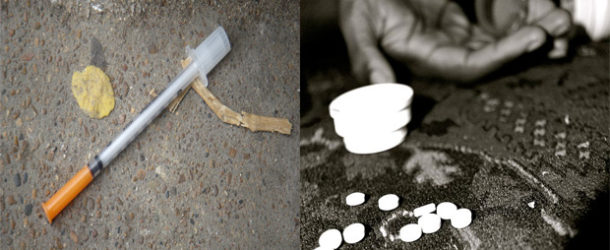The Massachusetts Department of Public Health has released data showing opioid-related deaths have risen from January through September 2020, compared to the same time period a year ago.
From MA DPH
BOSTON — Opioid-related overdose deaths in Massachusetts increased slightly in the first nine months of 2020 compared with the same time last year, according to preliminary data released today by the Massachusetts Department of Public Health (DPH). In the first nine months of the year, there were 1,517 confirmed and estimated opioid-related overdose deaths, an estimated 33 more deaths than in the first nine months of 2019.
The estimated uptick coincides with the extraordinary public health challenges presented by the COVID-19 pandemic that led the Commonwealth to swiftly enact overdose prevention efforts, including expanding telehealth services, reducing barriers to treatment, expanding naloxone distribution, and receiving federal approval to permit licensed treatment programs to provide take-home doses of medications for opioid use disorder.
“As we battle the COVID-19 pandemic, we remain committed to continuing our work to address the opioid crisis and support our residents,” said Governor Charlie Baker. “We recognize that the stress, anxiety and social isolation brought on by COVID-19 can be especially hard on those dealing with substance use disorder and we remain focused on serving those in need with our multi-pronged strategy to overdose prevention treatments, services, and supports.”
“We remain committed to supporting our residents as we battle public health challenges like COVID-19 and the opioid crisis,” said Lt. Governor Karyn Polito. “Our Administration continues to make progress in the fight against the opioid epidemic and to ensure that life-saving treatments remain accessible across the Commonwealth for the people and families impacted by this disease.”
In response to reports of increases in opioid-related overdose deaths that may be tied to isolation and other pandemic-related factors, DPH distributed more than 75,000 naloxone kits from March through September to opioid treatment programs, community health centers, hospital emergency departments, and houses of correction. For individuals recently released from incarceration, the naloxone kits included information on medications to treat opioid addiction and other critical community resources.
DPH received a two-year $113.9 million federal grant in August to continue its aggressive response to the opioid epidemic by increasing access to all FDA-approved medications for opioid use disorder, reducing unmet treatment need, and reducing opioid misuse and overdose through prevention, intervention, treatment and recovery initiatives. This grant includes nearly $57 million a year in federal funding from the Substance Abuse and Mental Health Services Administration (SAMHSA) through September 2022.
“We continue to aggressively target resources that are critical to responding effectively to the opioid crisis,” said Health and Human Services Secretary Marylou Sudders. “We will continue these efforts and work with treatment providers to reduce opioid addiction and overdose deaths.”
“The opioid epidemic continues to impact too many families and vulnerable populations who’ve had to contend with the added fears and stresses of a pandemic,” said Public Health Commissioner Monica Bharel, MD, MPH. “Through these and other efforts, we have not let up on our efforts to address opioid addiction.”
Overall, opioid-related overdose deaths dropped 5 percent in 2019 since their peak in 2016, when 2,102 people died, preliminary data show. Fentanyl has been a persistent factor in many of these deaths. In the first half of 2020, the rate of fentanyl present among opioid-related overdose deaths where a toxicology report was available was 93 percent. Despite the growth of fentanyl use, the 2020 opioid-related overdose death rate of 29 per 100,000 people is approximately 5 percent lower than the 30.6 per 100,000 in 2016.
In the first six months of 2020, the rate of heroin or likely heroin present in opioid-related overdose deaths was 16 percent, continuing a downward trend since 2014. After fentanyl, cocaine continues to be the next most prevalent drug among opioid-related overdose deaths, present in toxicology reports at a rate of 46 percent in the first half of 2020.
Toxicology screens indicate that benzodiazepines, amphetamines, and prescription opioids in opioid-related overdose deaths have remained stable.
Among the other findings of the latest opioid report:
Between 2018 and 2019, the confirmed opioid-related overdose death rate for all residents remained nearly the same: 29.4 per 100,000 in 2018 and 29.5 per 100,000 in 2019. However, the rate for all Black non-Hispanic residents increased nearly 38 percent from 15.7 to 21.7 per 100,000 between 2018 and 2019.
In the same time period, the confirmed opioid-related overdose death rate for Black non-Hispanic and Hispanic men increased, while it decreased for white non-Hispanic and Asian Pacific Islander non-Hispanic men.
Between 2018 and 2019, the confirmed opioid-related overdose death rate for Black non-Hispanic women increased, while it decreased for white non-Hispanic and Hispanic women.
Males comprise 72 percent of all opioid-related overdose deaths occurring in the first nine months of 2020.
57 percent of opioid-related deaths occurred in people who were between 25 and 44 years old
36 percent were between 45 and 65 years old
In the second quarter of 2020, males aged 25-34 continued to represent the greatest number of suspected opioid-related incidents treated by Emergency Medical Services (EMS), accounting for 23 percent of opioid-related incidents with a known age and sex.
Naloxone was administered in 96 percent of acute opioid overdoses during the first six months of 2020. In that time period, 56.9 percent of all opioid-related EMS incidents were categorized as acute opioid overdoses.
Just over 219,000 individuals in Massachusetts received prescriptions for Schedule II opioids in the third quarter of 2020, which is a significant increase from the previous quarter when about 46,000 individuals were receiving these prescriptions, but a nearly 44 percent decrease from the first quarter of 2015 (n=390,532).










Comments are closed.